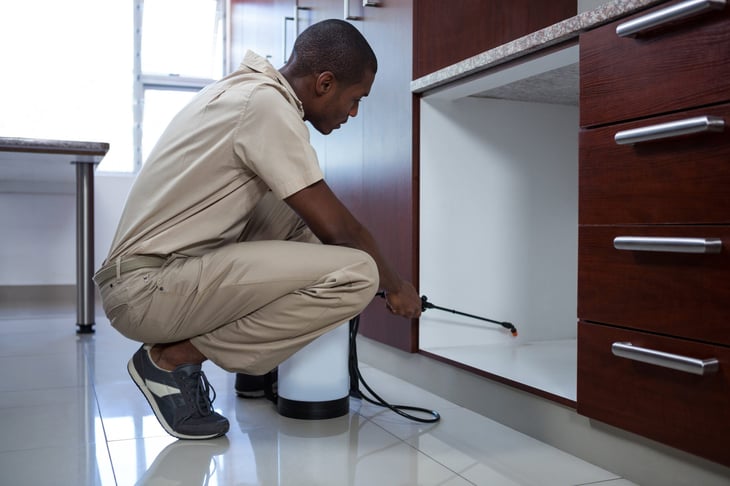
Editor's Note: This story originally appeared on Point2.
Moving into a new home is an exciting, though stressful, experience. So when you finally move in, it’s understandable if you just want to take it easy and relax.
However, some maintenance tasks shouldn’t be overlooked to fully enjoy your new home. Pest control is one of those, but unfortunately, many of us only remember it only when it’s too late.
Pests come in all shapes and sizes and can do varying degrees of damage to your new home if left unchecked. If you’re moving into a new home, especially one that’s been empty for a while, pest control should be a high priority.
However, it can be challenging to know where to start, and getting it wrong can present a considerable risk.
Fortunately, we’ve got you covered. Check out our top do-it-yourself pest control tips to protect your home and family from pesky critters.
1. Check Out the Woodwork in Your New Home

Severe infestations will commonly be unearthed during the home inspection. But, if it’s been several months since then and the home has been vacant, it’s well worth doing your due diligence once you move in.
Look over anything made of wood, keeping an eye out for signs of termites, which thrive on dry, brittle wood. Be sure to check the following:
- Wooden doors, windows and frames
- Wooden cladding
- Tables and chairs
- Rafters and other roofing elements
- Baseboards
It’s also worth having a good look outside too. Check for any untreated wood that’s in contact with the soil. These can be havens for ants and termites who will chew through the damp wood in no time and make their way into your home.
2. Inspect the Cabinets
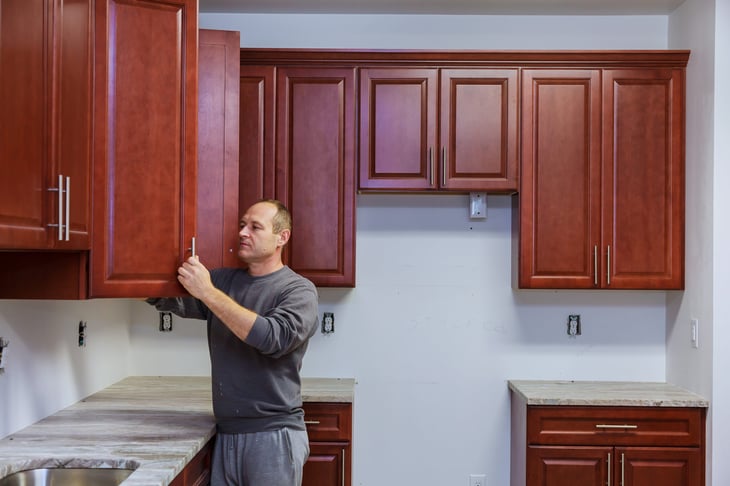
Before you start moving your dishes into your kitchen cabinets, be sure to check them thoroughly and clean them well. Mice and rats will soon find themselves at home in a vacant property and will often enjoy feasting on the crumbs left in a kitchen cabinet.
You’ll typically smell if a rodent has been in the cabinets, but also look for droppings, chewed-up wood, and holes in the backboard.
3. Check the Crawlspace and Seal Foundation Cracks
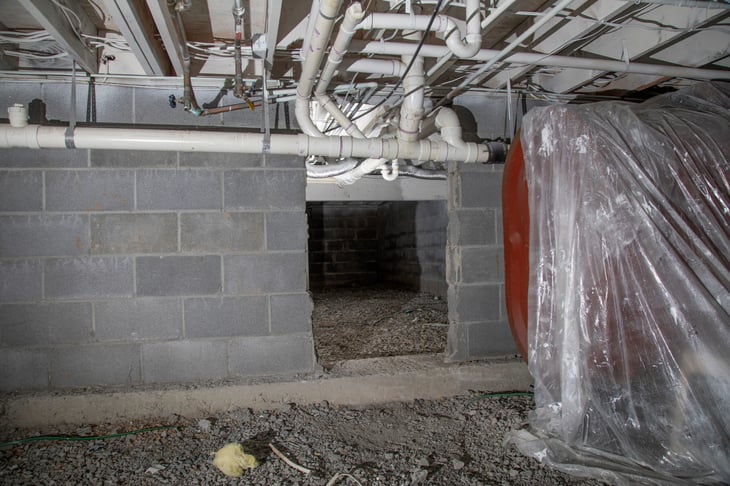
Take a good look around the outside of your home in the crawlspace and around the foundations, keeping an eye out for cracks or holes that may allow pests of all sizes inside.
Fill larger holes with wire wool and spray them with expanding foam to seal them off. Use caulk on smaller cracks. While in the crawlspace, ensure there are no nests down there.
4. Examine the Attic

A warm, dark attic is another hotspot for all types of pests, such as wasps, birds, raccoons, and bats. Once they’re in, they’ll damage your insulation and other parts of the home.
Look out for any entry points, and be sure to seal them up as before. While you’re up there, check wooden rafters for signs of termite damage.
5. Get New Mattresses and Bedding
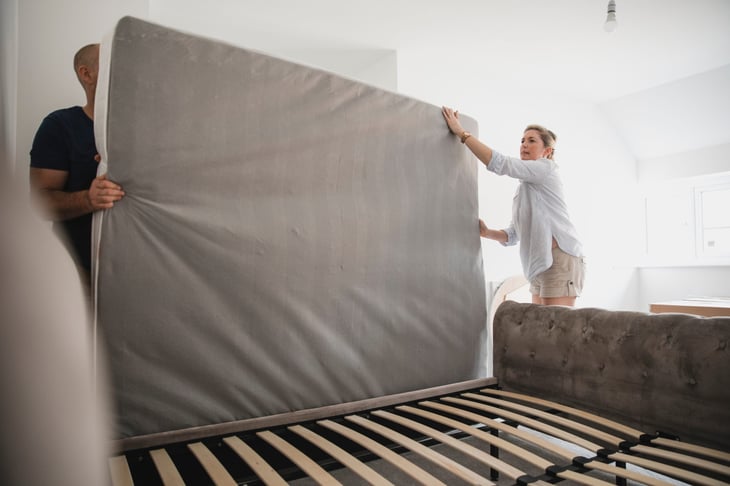
If you move into a home and the old mattresses and bedding have been left behind, it’s well worth throwing them out and buying new ones. Bed bugs are a real risk and can be hard to eliminate once they find their way into your clothes.
In fact, before you unpack your clothes, towels and any other fabrics, it’s not a bad idea to give them a hot wash.
6. Inspect the Yard
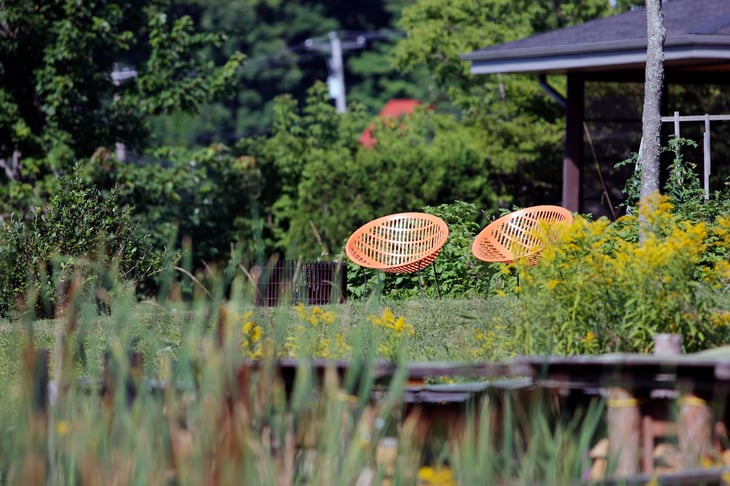
If the yard in your new home is overgrown, it’s important to give it a good clean-up as soon as possible. Be on the lookout for burrowing animals, wasp or hornet nests, anthills and termite mounds, as well as any other signs of pests.
Overgrown shrubs and trees should be trimmed, and it’s worth mowing the lawn to ensure nothing is hiding there.
If your new yard has a pond or another type of water feature, ensure the water hasn’t gone stagnant, and if necessary, put anti-mosquito breeding measures in place.
7. Identify the Problem Before Trying to Fix It
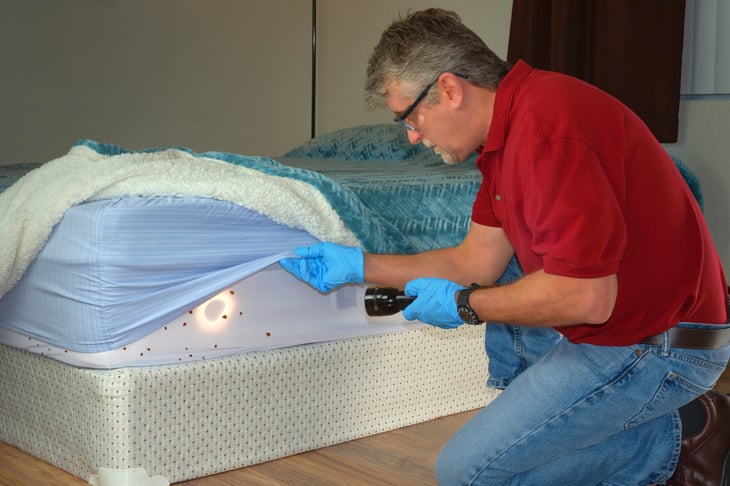
There are many types of pests you might encounter in your new home, and each of them needs to be treated in its own way. Unfortunately, there’s no magic cure for every issue, so identifying exactly which pest gives you grief is essential.
For example, a spray that is 100% effective against cockroaches won’t necessarily deal with rats or wasps.
So, before you start laying traps or applying dangerous chemical treatments, be sure you know what you’re dealing with. If in doubt, don’t hesitate to contact a professional pest control company.
8. Use the Right Products in the Right Places
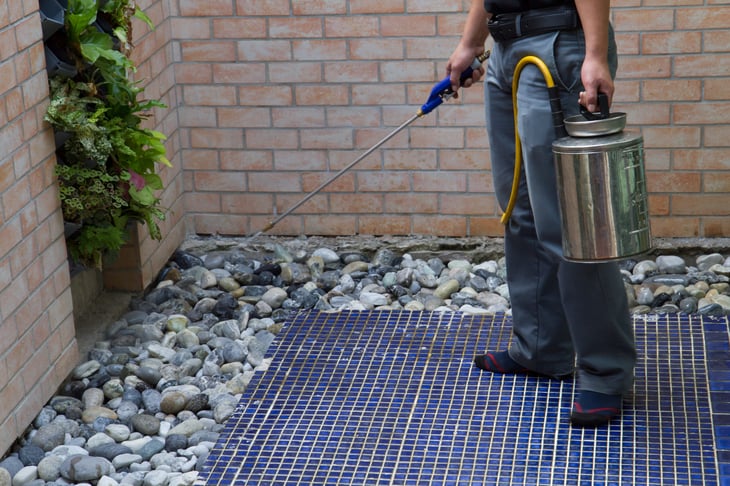
Once you’ve identified the pest, be sure to conduct thorough research before using chemical treatments. In many cases, such products are labeled for inside or outside use, even if they’re designed to treat against the same pest.
Don’t be tempted to use just one in both areas, as these chemical treatments are designed differently to maximize their performance in either environment.
For example, most outdoor chemicals are stronger than indoor ones. As such, they tend to remain toxic for longer and can harm inhabitants if applied indoors.
Meanwhile, indoor treatments typically break down faster, making them much safer for pets and family members living in the home.
9. Never Mix Pest Control Treatments
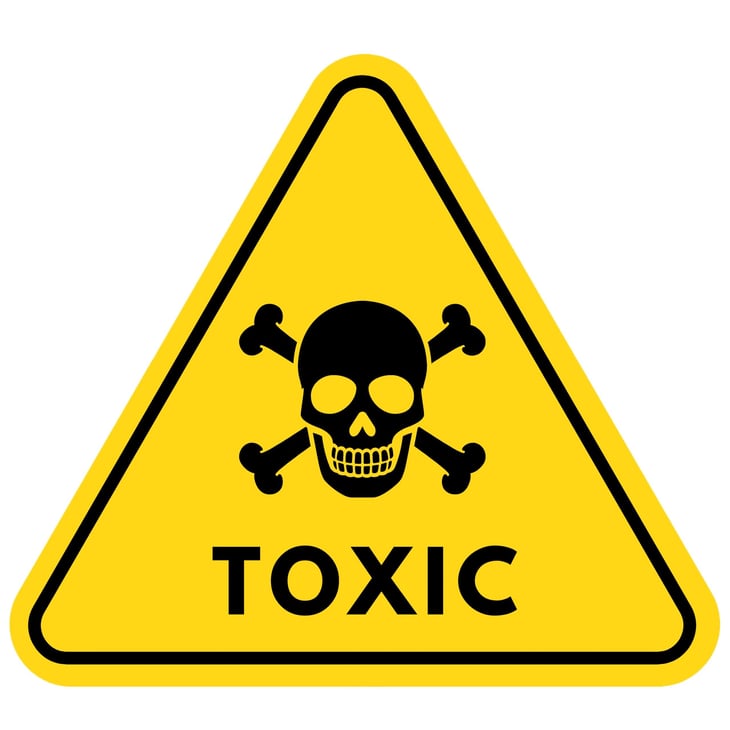
Unless you’re a qualified chemist in a lab setting, mixing toxic chemicals is never a good idea. Mixing two types of pest control chemicals will rarely create a more effective solution. Instead, it’s likely to be highly damaging to your health.
In the same vein, stick to the instructions on the pack. Using double the amount doesn’t mean it’ll be twice as effective.
Also, avoid putting pest control chemicals in any container other than their original one. This will contain all the relevant safety information and warnings, preventing accidental use, which can sometimes prove fatal.
10. Place Chemical Treatments and Traps With Care
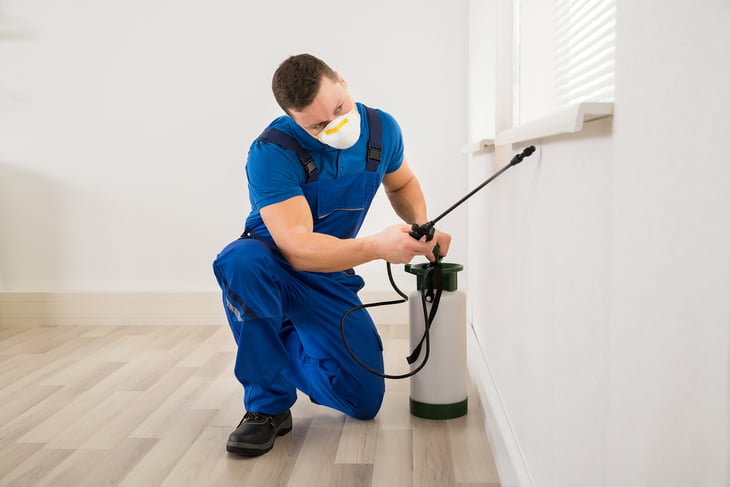
Never leave dangerous chemicals or traps where kids or pets will find them. Many chemical pest control treatments are just as toxic to humans and domesticated creatures as they are to the pests you’re trying to get rid of.
If you need to spray chemicals, ensure pets and children are out of the home or seal off the affected area.
Likewise, if traps need to be laid, hide them behind or underneath furniture or cabinets, where kids and pets won’t be able to disturb them.
11. Take Care When Disposing of Leftover Chemicals
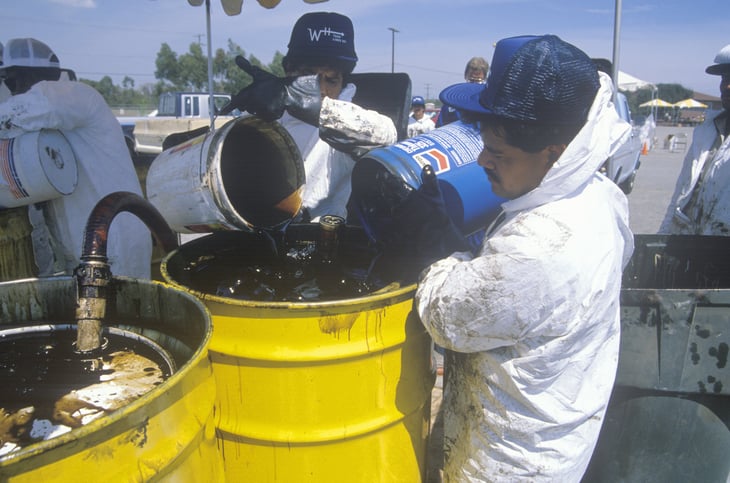
Many pest control products are labeled as hazardous waste and must be disposed of safely. The label will generally tell you how you need to dispose of them, and you can also check whether your area has a community hazardous waste collection system in place.
Never throw them in the garbage bin or down the toilet or sink.
12. Inform Your Neighbors

If you have pests in your home, there’s a chance that your neighbors may also have them. So, before you start treating them, let your neighbors know so they can also check their homes.
Plus, if you’re laying traps or applying chemical treatments outside, it’s essential to let them know so that they can ensure their pets or kids stay away.
13. Take Preventive Pest Control Measures
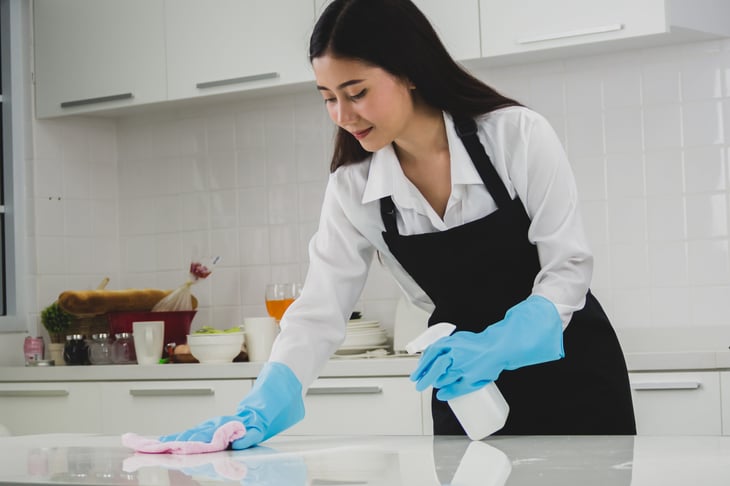
By far, the most effective form of pest control is to take preventative measures. In this way, you’ll be able to keep disastrous scenarios at bay, which can result in expensive and complicated fixes.
Fortunately, prevention is relatively easy, though it often requires vigilance to keep on top of things. Here’s what you can do to prevent pests from ever troubling your home:
- Remove any food or water sources for pests inside and outside your home. Fix any leaks and check that water isn’t pooling around your home.
- Block entry to your home by fixing gaps around pipes and board joints outside your home.
- Be careful when bringing new items into your home, such as wooden furniture (with termites, woodworms, etc.) or fabrics (with bed bugs, fleas, etc.).
- Keep your garbage cans closed and avoid letting garbage pile up.
- Store food in sealed containers and jars to stop pests from sniffing it out.
- Make sure your home is clean and tidy, inside and out, paying particular attention to cleaning up spilled food or drinks.
Having a clean and tidy home and outdoor space will go a long way towards keeping pests of all shapes and sizes at bay.
14. Call the Pros

DIY pest control solutions will get you so far, but calling in the pros in severe cases is essential. Pest control prices vary depending on location and what issue they’re fixing, but it’s almost always worth the cost.
With years of experience and access to more powerful treatments, professional pest controllers can eradicate an infestation much more easily and quickly than the typical homeowner.





Add a Comment
Our Policy: We welcome relevant and respectful comments in order to foster healthy and informative discussions. All other comments may be removed. Comments with links are automatically held for moderation.